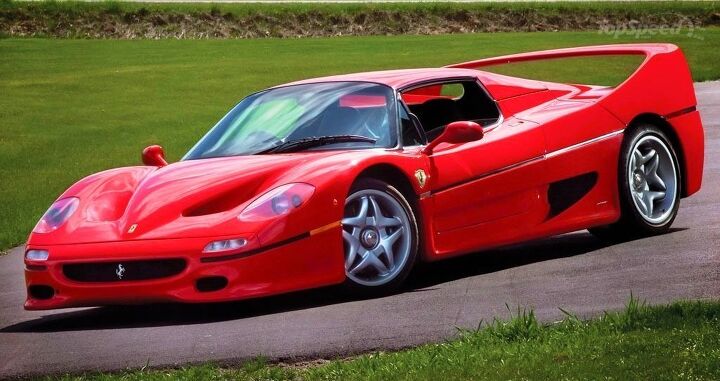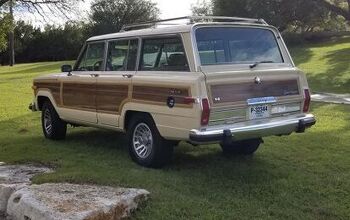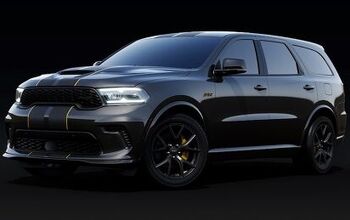Buy/Drive/Burn: Supercar Failures of the 1990s

Our recent Rare Rides entry on the Bugatti EB110 quickly sussed out a couple of mid-90s competitors in the comments section. Today, we’ll visit the trio and pick one to take home.
An entrant each from France, England, and Italy; all of them failures in their own right. Which big money flop will it be?
Bugatti EB110
When it debuted for the 1991 model year, Bugatti’s EB110 was the first new car the company produced since the early 1960s. Taking its model number from the age of the company’s founder, the EB110 dealt in some impressive numbers. A 3.5-liter V12 produced 552 horsepower via four turbochargers. A six-speed manual sent that power through all four wheels, earning it a top speed of 210 miles an hour. And it wasn’t enough. The company’s owner had an appetite bigger than his checking account could bear, and Bugatti went under for a second time by 1995.
Ferrari F50
With Ferrari’s already legendary F40 wrapping up production in 1991, Ferrari had a successor in the works. Ready for 1995, the targa-roofed machine had all the right characteristics for success. Styling was a modern interpretation of the F40’s. The engine, located amidships, was a dual-overhead cam V12 generating 513 horsepower without turbo or supercharger assistance. Not one for all-wheel drive, power was strictly at the rear. Perhaps all the expected-ness of the F50 was its issue. It didn’t try as many new things as its father, and its higher level of refinement gave it a lower level of excitement. Everyone remembers the F40 and the Enzo, but the F50 is lost somewhere in the middle.
Jaguar XJ220
The XJ220 was intended as a follow-up model to the very limited run of XJR-15s, which Rare Rides covered previously. Engineers at Jaguar worked in their free time to create a concept in 1988 that boasted 12 cylinders and four-wheel drive. The project was approved, but serious design changes were in store. The production version went on sale in 1992 with a 3.5-liter twin-turbo V6 in the middle. Paired to a five-speed manual, 542 horsepower traveled only to the rear wheels. A planned top speed of 220 miles an hour (hence the name) was not met — the XJ220 managed 212 instead. Jaguar’s project went over budget, and the £290,000 original asking price ballooned to £470,000 upon the car’s introduction in 1992. And that was right in time for the very same recession which affected sales of the EB110 above. Customers could still buy 1994 XJ220s brand new in 1997.
Three relative supercar failures; which one would you buy?
[Images: seller, Ferrari, Jaguar]

Interested in lots of cars and their various historical contexts. Started writing articles for TTAC in late 2016, when my first posts were QOTDs. From there I started a few new series like Rare Rides, Buy/Drive/Burn, Abandoned History, and most recently Rare Rides Icons. Operating from a home base in Cincinnati, Ohio, a relative auto journalist dead zone. Many of my articles are prompted by something I'll see on social media that sparks my interest and causes me to research. Finding articles and information from the early days of the internet and beyond that covers the little details lost to time: trim packages, color and wheel choices, interior fabrics. Beyond those, I'm fascinated by automotive industry experiments, both failures and successes. Lately I've taken an interest in AI, and generating "what if" type images for car models long dead. Reincarnating a modern Toyota Paseo, Lincoln Mark IX, or Isuzu Trooper through a text prompt is fun. Fun to post them on Twitter too, and watch people overreact. To that end, the social media I use most is Twitter, @CoreyLewis86. I also contribute pieces for Forbes Wheels and Forbes Home.
More by Corey Lewis
Latest Car Reviews
Read moreLatest Product Reviews
Read moreRecent Comments
- FreedMike They just opened a Buc-ees north of Denver on 25. Haven't had the urge to check it out yet but I hear these stores are a trip.
- Kwik_Shift_Pro4X I'd rather see a Mazda 6 wagon.
- Arthur Dailey The saying is 'you get the union that you deserve'. When workers regard their senior executives as incompetent, when managers and executives receive bonuses regardless of their performance or lack thereof, they will naturally be resentful.When management views workers as 'the problem' then naturally workers will push back.Many Southern politicians are vehemently anti-union and make their feelings widely known. This does have some influence on their constituents. Migration to the US south is often due to lower living costs, some of which is due to weather. No or milder winters result in lower living costs. Smaller heating bills, less need for winter apparel, no need for winter tires, longer growing seasons creating less expensive/easier access to some foods. And most people tend to prefer milder weather. There is also a strong anti (big) government tradition among elements of those whose families stretch back to the South for decades. Perhaps due to Reconstruction? After all isn't NASCAR based on attempting to avoid paying taxes? This may erode as more people move from to the South, either from internal or external immigration.
- MaintenanceCosts This is how you do it.
- SCE to AUX Never heard of Buc-ee's, especially here in the Pittsburgh area."As Electrek noted, 68 percent of Texans live in those regions." I get it, but putting chargers where the other 32% live may be more important.I wonder if they'll be installing CCS or NACS (Tesla) connectors, or both.




































Comments
Join the conversation
Buy Bugatti, tell inquiring gawkers its bodykit Fiero Chiron. Bugattiero. Drive Ferrari and likewise bodykit Fiero F40. Ferrariero. Each just weird, dated, and ugly enough to sometimes maybe pull hoax off. Burn XJ.
Buy - Ferrari. It still looks modern and breathtaking today, and nobody ever lost money on a rare Ferrari, did they?... Drive - Jaguar. At one point it was the world's fastest production car. This despite using the engine from the 6R4 rally version of the Austin Metro economy car (a car that was meant to replace the original Mini). To be fair, the turbo'd V6 was probably ahead of it's time given 21st century downsizing. Looks good, even the popup lights aged well. Wouldn't buy though - Jaguars aren't known for their reliability, and I'd say that Jag dealers are more used to servicing fleet XFs than a supercar. Burn - Bugatti. Yes it's rare, but those challenging looks haven't really aged well, especially since VW showed what they could really do with the marque. I'd be happier turning up outside the Monaco casino in the Ferrari or Jag.